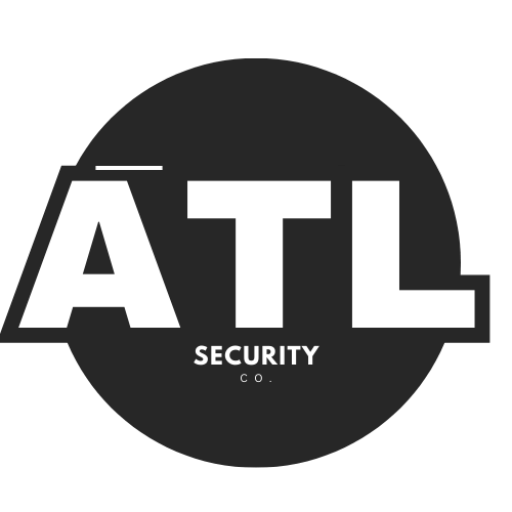Fire safety in restaurants is a critical concern that cannot be overstated. The restaurant industry is characterized by high heat, open flames, and the use of various cooking oils, all of which create an environment where fires can ignite rapidly. According to the National Fire Protection Association (NFPA), cooking equipment is the leading cause of restaurant fires, accounting for nearly 60% of all incidents.
The consequences of a fire can be devastating, not only resulting in property damage but also posing significant risks to the safety and well-being of employees and patrons. A single fire incident can lead to loss of life, injuries, and financial ruin for a business, making it imperative for restaurant owners to prioritize fire safety measures. Moreover, the reputation of a restaurant can be severely impacted by fire incidents.
Customers are likely to avoid establishments that have experienced fires, fearing for their safety and questioning the overall hygiene and management practices of the restaurant. In an industry where word-of-mouth and online reviews play a crucial role in attracting customers, a fire can tarnish a restaurant’s image for years. Therefore, implementing robust fire safety protocols not only protects lives and property but also safeguards the business’s reputation and long-term viability.
Key Takeaways
- Fire safety in restaurants is crucial for the safety of customers, staff, and the business itself.
- Common causes of kitchen fires in restaurants include grease buildup, electrical malfunctions, and human error.
- Essential fire safety equipment for restaurants includes fire extinguishers, sprinkler systems, and smoke detectors.
- Best practices for preventing kitchen fires include regular cleaning, proper storage of flammable materials, and staff training.
- Training and education for restaurant staff on fire safety protocols and emergency response is essential for preventing and managing fires.
Common Causes of Kitchen Fires in Restaurants
Understanding the common causes of kitchen fires is essential for effective prevention strategies. One of the primary culprits is cooking equipment, particularly deep fryers, stovetops, and ovens. Grease buildup is a significant risk factor; when cooking oils reach their flash point, they can ignite spontaneously or when exposed to an open flame.
For instance, a deep fryer that has not been cleaned properly can lead to grease fires that spread quickly throughout the kitchen. Additionally, unattended cooking is another prevalent cause of fires in restaurants. When chefs or kitchen staff leave cooking food unattended, it increases the likelihood of overheating and ignition.
Electrical malfunctions also contribute significantly to kitchen fires. Faulty wiring, overloaded circuits, and malfunctioning appliances can create sparks that ignite nearby flammable materials. For example, if a commercial refrigerator or freezer has frayed wires or is improperly maintained, it can lead to electrical fires that may go unnoticed until it’s too late.
Furthermore, improper storage of flammable materials such as cleaning supplies or paper products near heat sources can exacerbate fire risks. Understanding these common causes allows restaurant owners to implement targeted strategies to mitigate risks effectively.
Essential Fire Safety Equipment for Restaurants

To ensure a safe environment, restaurants must be equipped with essential fire safety equipment. Fire extinguishers are a fundamental component of any fire safety plan. It is crucial to have the right type of extinguisher for different classes of fires; for instance, Class K extinguishers are specifically designed for kitchen fires involving cooking oils and fats.
Regular inspections and maintenance of these extinguishers are necessary to ensure they are fully charged and operational when needed. In addition to extinguishers, automatic fire suppression systems are vital in commercial kitchens. These systems are designed to detect heat and flames and automatically release fire-suppressing agents to extinguish fires before they escalate.
For example, many restaurants install wet chemical systems over cooking equipment to combat grease fires effectively.
These devices must be regularly tested and maintained to ensure they function correctly during emergencies.
Best Practices for Preventing Kitchen Fires
Implementing best practices for fire prevention is essential for maintaining a safe kitchen environment. One of the most effective strategies is establishing a routine cleaning schedule to remove grease buildup from cooking surfaces, hoods, and ducts. Regular cleaning not only reduces the risk of ignition but also enhances overall kitchen hygiene.
For instance, many restaurants adopt a weekly deep-cleaning regimen that includes degreasing hoods and filters to minimize fire hazards. Another critical practice is ensuring that all kitchen staff are aware of safe cooking procedures. This includes never leaving cooking food unattended and being vigilant about monitoring temperatures on stovetops and fryers.
Additionally, proper storage of flammable materials is crucial; items such as paper towels, cleaning rags, and packaging should be kept away from heat sources. Implementing a clear organizational system for storing these materials can significantly reduce the risk of accidental ignition.
Training and Education for Restaurant Staff
Training and education play a pivotal role in enhancing fire safety in restaurants. All staff members should undergo comprehensive training on fire safety protocols during their onboarding process. This training should cover topics such as the proper use of fire extinguishers, evacuation procedures, and how to respond in case of a fire emergency.
For example, conducting regular fire drills can help staff become familiar with evacuation routes and procedures, ensuring they can act swiftly and efficiently during an actual emergency. Ongoing education is equally important; refresher courses should be scheduled periodically to keep fire safety at the forefront of employees’ minds. Engaging staff in discussions about recent incidents or case studies can help reinforce the importance of vigilance in preventing fires.
Additionally, creating a culture of safety where employees feel empowered to report potential hazards or unsafe practices can significantly enhance overall fire safety in the restaurant.
Emergency Response Plan for Restaurant Fires

An effective emergency response plan is crucial for minimizing damage and ensuring the safety of everyone in the restaurant during a fire incident. This plan should outline clear procedures for evacuating patrons and staff safely while designating specific roles for employees during an emergency. For instance, one staff member may be responsible for guiding customers to exits while another calls emergency services.
Regularly reviewing and practicing this emergency response plan is essential to ensure that all employees are familiar with their roles and responsibilities during a crisis. Conducting mock drills can help identify any weaknesses in the plan and allow for adjustments as necessary. Furthermore, posting evacuation routes prominently throughout the restaurant can serve as a visual reminder for both staff and patrons in case of an emergency.
Regular Maintenance and Inspections for Fire Safety
Regular maintenance and inspections are vital components of an effective fire safety strategy in restaurants. Establishing a routine schedule for inspecting all fire safety equipment ensures that everything is functioning correctly and meets local regulations. This includes checking fire extinguishers for proper pressure levels, testing smoke detectors, and ensuring that automatic suppression systems are operational.
In addition to equipment inspections, it is essential to conduct regular assessments of the kitchen environment itself. This includes checking for grease buildup in hoods and ducts, inspecting electrical systems for potential hazards, and ensuring that all cooking equipment is in good working order. Engaging professional services for thorough inspections can provide an added layer of assurance that all safety measures are being adhered to.
Importance of Fire Safety Compliance and Regulations for Restaurants
Compliance with fire safety regulations is not just a legal obligation; it is also a moral responsibility that restaurant owners must uphold to protect their employees and customers. Local fire codes often dictate specific requirements regarding fire safety equipment, maintenance schedules, and training protocols that must be followed diligently. Failure to comply with these regulations can result in severe penalties, including fines or even closure of the establishment.
A restaurant that demonstrates commitment to compliance not only enhances its reputation but also contributes positively to the overall perception of the industry as a whole. By prioritizing fire safety compliance, restaurant owners can create a safer dining environment while ensuring their business remains viable in an increasingly competitive market.
FAQs
What are the common causes of kitchen fires in restaurants?
The common causes of kitchen fires in restaurants include unattended cooking equipment, overheating of cooking oil, grease buildup, electrical malfunctions, and flammable materials near heat sources.
How can restaurant owners prevent kitchen fires?
Restaurant owners can prevent kitchen fires by regularly cleaning and maintaining cooking equipment, installing fire suppression systems, training staff on fire safety protocols, keeping flammable materials away from heat sources, and ensuring proper ventilation in the kitchen.
What should restaurant staff do in case of a kitchen fire?
In case of a kitchen fire, restaurant staff should immediately turn off the heat source, use a fire extinguisher if trained to do so, evacuate the area, and call the fire department. It is important to never use water to extinguish a grease fire.
What are some fire safety measures for restaurant kitchens?
Some fire safety measures for restaurant kitchens include installing fire extinguishers and fire suppression systems, keeping flammable materials away from heat sources, maintaining clean and unobstructed ventilation systems, and conducting regular fire drills and training for staff.
Why is it important for restaurants to have a fire safety plan?
It is important for restaurants to have a fire safety plan to protect the safety of employees and customers, minimize property damage, comply with fire safety regulations, and prevent business interruptions due to fires.








